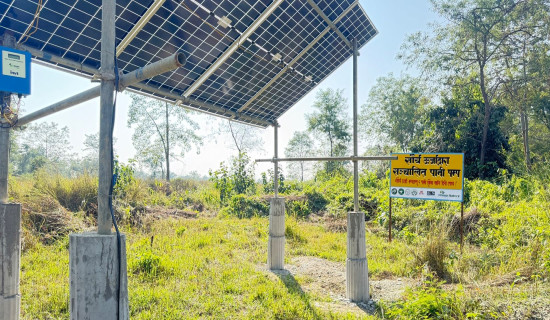- Thursday, 27 November 2025
The Import Scenario
Despite efforts being made to boost Nepal’s export trade, it has kept dwindling this year as well. The government has embraced the policy of increasing exports to reduce the trade deficit substantially. The nation’s export trade has fallen to 8.96 per cent during the first nine months of the current fiscal year (2022/23) from 9.87 per cent in the corresponding period last year. The country has been able to export goods worth Rs. 118.27 billion during the period. This amount is lower by 26.34 per cent from the last fiscal year (2021/22) when the country exported merchandises amounting Rs. 160.57 billion. In the first three quarters of the current fiscal year, the nation imported petroleum products, including diesel, petrol and liquefied petroleum gas (LPG), worth Rs. 261.09 billion, according to the data released by the Department of Customs. This fuel import makes up nearly 55 per cent more than the total exports the country made in the same period. It is a clear indication that the country spends a large amount of foreign currency while importing the fossil fuels.
As Nepal imports a variety of merchandises, including petroleum products, construction materials and foodstuffs from India, the former faces a huge trade deficit with the latter annually. In 2021-22, Nepal's total foreign trade imbalance remained at Rs. 1.72 trillion. Of this figure, the country suffered a trade deficit of Rs. 1.04 trillion with India alone. Although Nepal has opted for promoting the use of renewable sources of energy such as hydroelectricity, solar power, wind energy and water energy, import of fossil fuels have continued to increase every year. With a significant rise in the consumption of fossil fuels every year, the nation is bound to spend much on the import of such energies. So, the growing use of petroleum products is not sustainable economically. The use of fossil fuels is also unjustifiable from environmental perspective as it gives rise to air pollution. Bearing all this in mind, the government has come up with a plan to promote electric vehicles, especially in urban areas, and encourage people to use electricity for cooking purpose. Farmers have also been encouraged to apply electric pumps to extract underground water for irrigation.
In the first nine months of FY 2022-23, Nepal imported goods worth Rs. 1201.5 billion. This amount is around 18.08 per cent lower compared to the import of goods valued at Rs. 1466.66 billion during the same period last fiscal year when the imports had gone up by about 32 per cent from Rs. 1111.39 billion in 2020/21. Apart from petroleum fuels, the country imports iron and steel, mechanical appliances, animal or vegetable fat, plastic items and cereals. Because of a drastic depletion in foreign exchange reserves, the government had put a ban on import of luxury goods such as vehicles and liquor and introduced a provision requiring importers to maintain cash margin for the Letter of Credit (LC) while importing numerous other items. That step had led to a significant cut in imports. A liquidity crunch and high inflation have also led to a fall in the demand for goods.
The country's major exports include animal or vegetable fats and oils, tea and coffee, carpets and textiles, fibres, iron and steel and apparel. In the review period, the nation exported fats and oils worth Rs. 26 billion while it sold out tea and coffee worth Rs. 10 billion, carpets and textiles Rs. 9 billion, fibres Rs. 8.8 billion, and iron and steel goods of Rs. 7.3 billion. India, the United States of America, Germany, the United Kingdom, Turkey, Canada, France, Australia, Japan and Italy are Nepal's top 10 trade partners.

















